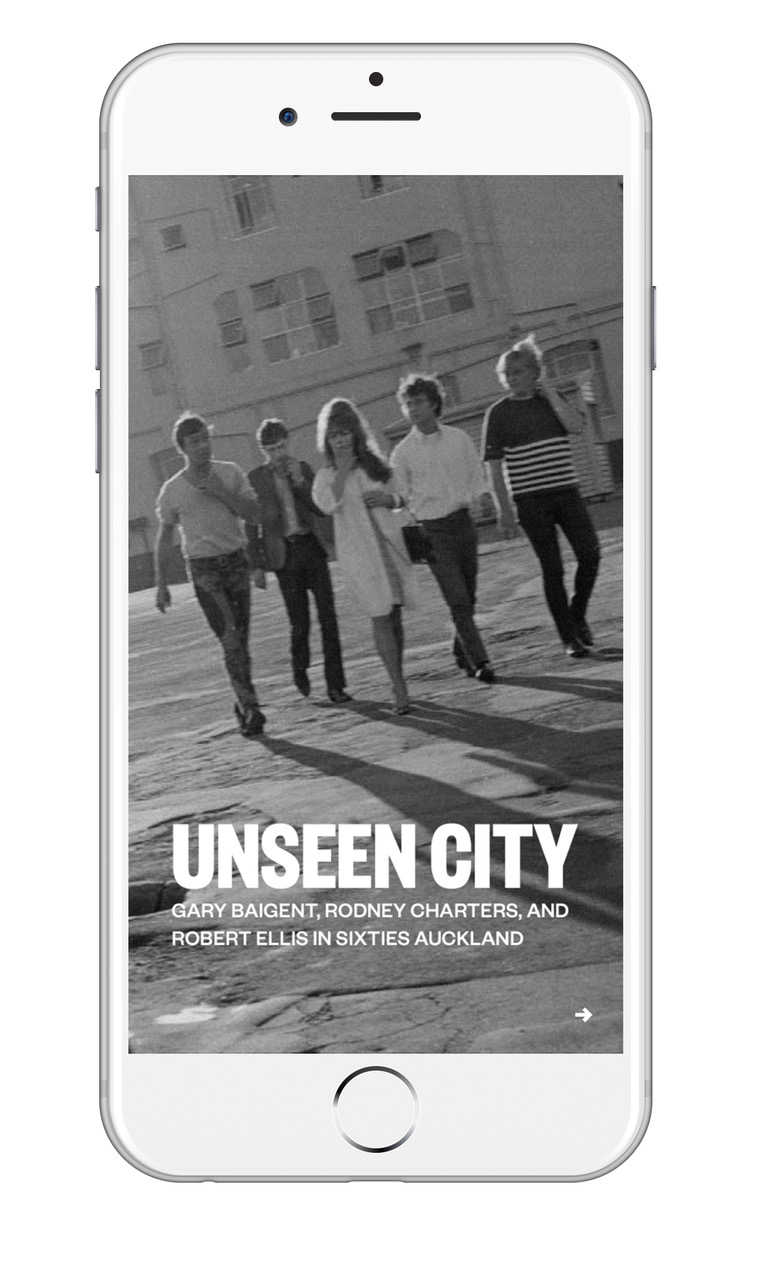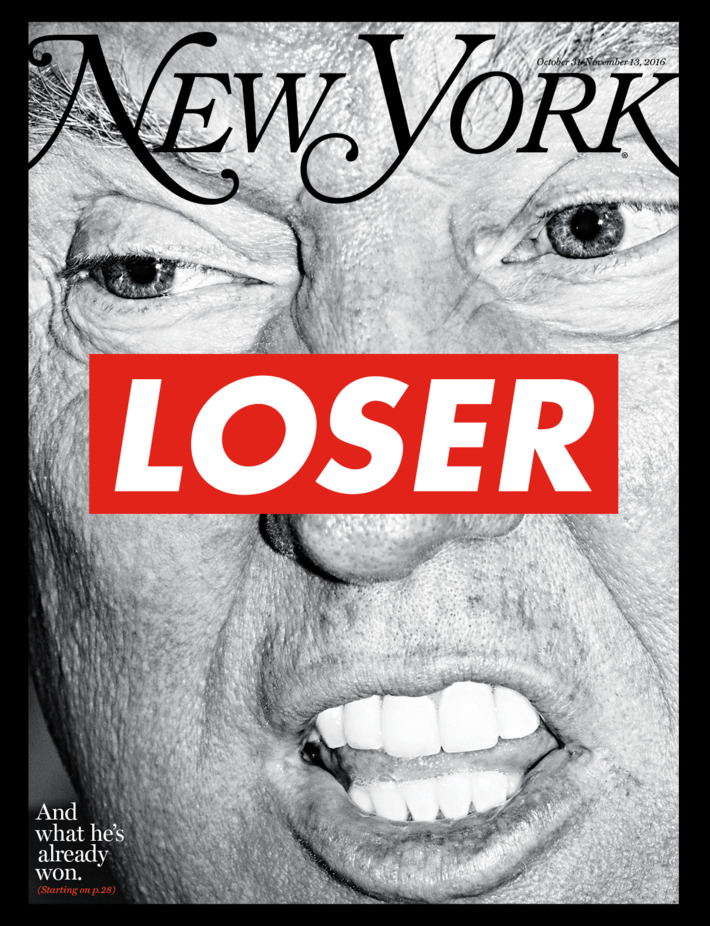.
I’m a middle-aged art curator, so I’m a hard-copy publishing guy. In the art world, hard-copy publishing is a status thing. Ink on paper in the morning smells like victory. But I’ve just been involved in making an app book and I love it. Baker Douglas has published an expanded app-book version of the catalogue for my 2015 show Unseen City: Gary Baigent, Rodney Charters, and Robert Ellis in Sixties Auckland. The digital format enables the inclusion of different kinds of content and way more content. The show comes to life in a rich new way. The app book includes Rodney Charters’s Film Exercise (1966) as a movie, rather than representing it through stills, and users are guided through Gary Baigent’s photobook The Unseen City (1967) as a movie. There are all kinds of added extras. Everything makes more sense. It leaves the original hard-copy publication for dead. We launch it at Art+Object in Auckland on 30 November, 6–8pm. Join us for the party.


Barbara Kruger, We Presume …
.
Barbara Kruger just designed the cover of New York magazine—her portrait of Donald Trump. I was reminded that, in 1988, Priscilla Pitts, Merylyn Tweedie, and I interviewed the American artist for Antic. Kruger was here for her show at Wellington’s Shed 11. She was a superstar, at the height of her fame, and intellectually intimidating. That’s probably why it took all three of us to interview her. Re-reading the interview, the funniest bit is when Tweedie asks Kruger if she would consider making a film ‘outside the Hollywood system’. Kruger replies: ‘What other system is there? … I don’t want to make a black-and-white film with words over it.’ Presumably, she was unaware that this described Tweedie’s own alternative films to a T. Here’s that interview.

Todd Showing
.
I just attended the opening of Barnacles, photographer Yvonne Todd’s new-work show at Tauranga Art Gallery. It was well worth the trek.
Todd is known for her ‘portraits’ of quirky, imagined female characters, who typically suffer from some or other illness, curse, or blight. Her works draw on the normative language of commercial studio photography, and yet seem persistently askew, perverse, wrong. She uses costumes to help create her characters. In the past, these included vintage gowns she purchased on the Internet (one was a glittering Bob Mackie number, formally owned by a real-life tragedy, Whitney Houston). However, for most of the portraits in Barnacles, Todd designed the outfits herself and had her crafty mum knock them up.
Todd’s new costumes are bizarre. Pale Blue’s robust outfit looks like a straitjacket, with absurd big-mitten hands and bondage-rope detailing. Moone’s oversized quilted bib is like a couture medical collar. Is it to prevent her from hurting herself, to absorb her drool, or both? Infanta wears a repressive Victorian puff-sleeve dress in an incongruously psychedelic paisley pattern. It totally conceals her body: the skirt goes to the floor, the sleeves cover her arms and the collar her neck, and she wears a face mask with the same pattern. It’s hard to know if there’s a real person underneath—the sitter is spectacularly erased. It’s part encasement fetishism, part Kusama-style self-obliteration, with nods to Leigh Bowery and Anatoly Moskvin. Todd’s other portraits are Ernestina (whose appliqué floral dress seems happier than she is) and Amateur Theatre (a glowering, self-styled drama queen).
Todd’s heroines are contradictions in terms. They are glamorous hysterics, ready for their closeups or their ECT.
The new works—we are told—draw on the artist’s recent experience of pregnancy. And one image—smaller than the others, and set off in an egg-shaped frame—presses the point. In Self Portrait (39 Weeks), Todd riffs on those ever-popular pregnancy portraits, where expectant mothers commission professional photographers to celebrate and preserve their most fecund, special moment. But Todd’s version is wacky. She wears a body-hugging, but badly dyed, blue unitard, from which her ripe belly pokes out in contrasting pink, as if visually distinguishing the shape of her own body from that the baby bump. (Perhaps the baby is a ‘barnacle’.) It’s a very flattering image of Todd’s late-pregnancy body, and yet, for such a studio-shot scenario, Todd seems surprisingly un-made-up, and, compared with her five model hysterics, rather plain. For no apparent reason, she holds a pair of glasses.
Todd plays on our desire to interpret, offering us a few hooks, but nothing definitive. On the one hand, Barnacles seems a bit random—a miscellany. On the other hand, it’s tempting to join the dots, to try to find a diagnosis that fits all the symptoms. Can we link the themes of body restraint and body anxiety in Todd’s character portraits to Todd’s own pregnancy?
In addition to the portraits, the show includes two still-life studies: one of a withered old raincoat that looks like a jellyfish, or, perhaps, in this company—we might imagine—a placenta (Augusta); another of a distressed old sack. Perversely, this work is called Sack-Like. But, surely, a sack is not sack like; it is a sack. Is this sack ‘sack-like’ because that’s all there is to it (literally) or to imply that there is more to be said (metaphorically)? By adding this apparently innocuous work with its apparently redundant title, Todd makes me think: sacks are sacks, clothes are sacks, bodies are sacks in sacks, pregnant women are incubation sacks, and images are sack-like—art is pregnant. Todd may be ‘showing’, but she won’t let the cat out of the bag.
(Tauranga Art Gallery, until 6 November 2016; also Fictitious Bodies: Costume in Yvonne Todd’s Photography, Tauranga Art Gallery, until 4 December.)
Who Am I?
I am a contemporary-art curator and writer, and Director of the Institute of Modern Art, Brisbane. I have held curatorial posts at Wellington’s National Art Gallery, New Plymouth’s Govett-Brewster Art Gallery, Dunedin Public Art Gallery, Auckland Art Gallery, and, most recently, City Gallery Wellington, and directed Auckland’s Artspace. My shows include Headlands: Thinking through New Zealand Art for Sydney’s Museum of Contemporary Art (1992); Action Replay: Post-Object Art for Artspace, Govett-Brewster Art Gallery, and Auckland Art Gallery (1998); and Mixed-Up Childhood for Auckland Art Gallery (2005). My City Gallery shows include Yvonne Todd: Creamy Psychology (2014), Julian Dashper & Friends (2015), Francis Upritchard: Jealous Saboteurs (2016), Colin McCahon: On Going Out with the Tide (2017), John Stezaker: Lost World (2017), This Is New Zealand (2018), Iconography of Revolt (2018), Semiconductor: The Technological Sublime (2019), Oracles (2020), Zac Langdon-Pole: Containing Multitudes (2020), and Judy Millar: Action Movie (2021). I curated New Zealand representation for Brisbane’s Asia-Pacific Triennial in 1999, the Sao Paulo Biennale in 2002, and the Venice Biennale in 2003 and 2015. I am co-publisher of the imprint Bouncy Castle.
Contact
BouncyCastleLeonard@gmail.com
+61 452252414
This Website
I made this website to offer easy access to my writings. Texts have been edited and tweaked. Where I’ve found mistakes, I’ve corrected them.
.